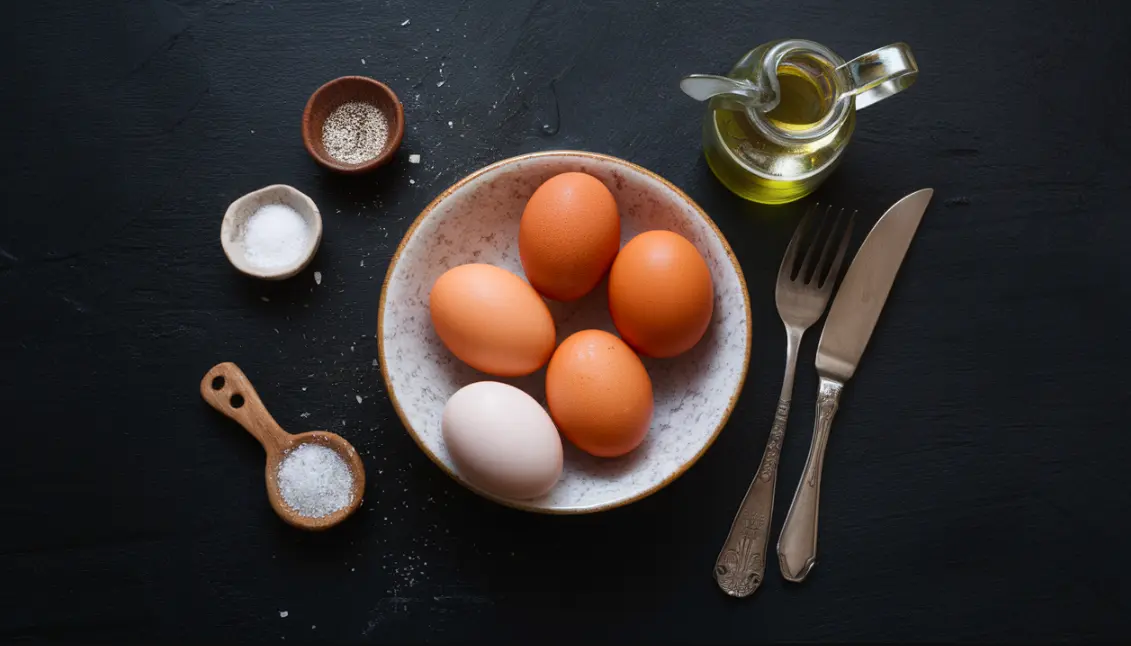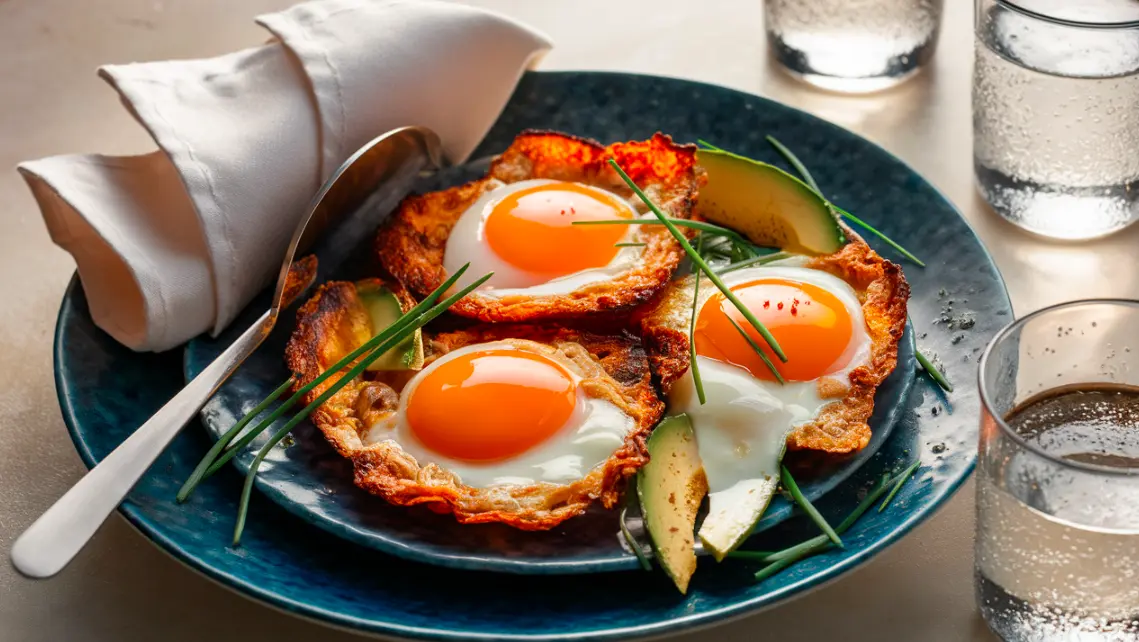Over medium eggs are the perfect balance between runny and fully cooked eggs, where the whites are fully set and the yolks are thick but still a bit runny. Many breakfast enthusiasts love this egg preparation style because it provides a rich and creamy texture without being too liquidy. This guide will walk you through the ins and outs of making over medium eggs—from the ingredients and steps to tips for getting the best results every time.
Introduction
If you’ve ever wondered how to achieve the perfect over medium eggs, look no further. These eggs offer the ideal middle ground for those who prefer a slightly runny yolk while ensuring the whites are cooked through. In this comprehensive guide, we will explore everything you need to know to cook over medium eggs to perfection. We’ll cover the ingredients, offer a step-by-step guide, and share essential tips to make sure your eggs turn out just right. Whether you’re new to this method or looking to perfect your technique, you’ll find everything you need here.
Ingredients for Over Medium Eggs

Creating the perfect over medium eggs requires only a few ingredients, but the right approach and quality matter. Let’s break them down:
1. Fresh Eggs
Eggs are, of course, the main ingredient in over medium eggs. Fresh eggs are ideal as they hold together better in the pan, ensuring that both the whites and yolk cook properly.
2. Butter or Oil
It is used to prevent the eggs from sticking to the pan and to add flavor. Butter provides a rich, creamy taste, while oil offers a neutral option.
Substitutions: For a healthier alternative, you can use non-stick cooking spray, or for dairy-free, opt for vegetable or olive oil.
3. Salt
A pinch of salt enhances the flavor of the eggs, bringing out their natural taste without overpowering them.
4. Pepper (Optional)
Pepper is a common seasoning for over medium eggs. Add it after cooking for a bit of spice and flavor contrast.
Substitutions: Paprika or chili flakes can also be used to add a different flavor profile.
Step-by-Step Guide to Preparing Over Medium Eggs
Making over medium eggs is relatively simple, but attention to detail is essential to get the perfect texture. Follow these steps carefully for the best results.
Step 1: Heat the Pan
Start by preheating your non-stick or cast-iron skillet over medium heat. Allow the pan to warm up for about a minute before adding any fat to ensure even cooking.
Step 2: Add Butter or Oil
Add a small amount of butter or oil to the pan. Let the butter melt and coat the entire surface, or swirl the oil around the pan to ensure even coverage. Make sure the butter doesn’t brown before you add the eggs.
Step 3: Crack the Eggs into the Pan
Crack each egg carefully into the pan. It’s best to crack them on a flat surface to avoid breaking the yolk. Try to keep the eggs separate in the pan.
Step 4: Cook the Eggs
Let the eggs cook undisturbed until the whites are mostly set but still slightly runny on top, which should take about 2-3 minutes. You want to avoid the whites getting crispy while ensuring they’re fully cooked underneath.
Step 5: Flip the Eggs
Using a spatula, carefully flip each egg over. This step requires a delicate touch to avoid breaking the yolk. Allow the eggs to cook on the other side for an additional 1-2 minutes, depending on how runny or firm you prefer the yolks. The goal is to achieve a thick, slightly runny yolk and fully cooked whites.
Step 6: Serve
Once the eggs have reached the desired doneness, remove them from the pan and serve immediately. Sprinkle with salt and pepper to taste.
Tips for Achieving the Best Over Medium Eggs

Achieving the perfect over medium eggs can sometimes be tricky, but with these tips, you’ll master the technique in no time.
1. Use Fresh Eggs
Fresh eggs have firmer whites and yolks, making them easier to cook evenly. Older eggs may spread out more in the pan, leading to uneven cooking.
2. Maintain Medium Heat
Keeping the heat at medium is crucial for over medium eggs. Too high of heat will cause the whites to become rubbery and the yolks to cook too quickly, while too low of heat will prevent the eggs from cooking evenly.
3. Handle the Flip Gently
Flipping the eggs is the most challenging part of this process. Use a thin spatula and gently slide it under the egg. Move slowly to avoid breaking the yolk, and flip the egg in one smooth motion.
4. Keep an Eye on Time
Timing is key to getting the perfect consistency for over medium eggs. Typically, 2-3 minutes on the first side and 1-2 minutes on the second side will achieve the desired result, but this may vary depending on your stove and pan.
Pairing Suggestions for Over Medium Eggs
Over medium eggs are incredibly versatile and pair well with a variety of dishes. Here are some pairing suggestions:
1. Toast
A slice of buttery toast is a classic pairing with over medium eggs. The bread soaks up the slightly runny yolk, making for a delicious bite.
2. Hash Browns
Crispy hash browns provide a wonderful contrast to the soft, creamy texture of over medium eggs. The combination makes for a hearty breakfast.
3. Avocado
Avocado adds creaminess and a healthy fat component to balance out the eggs. Serve the eggs on top of avocado toast for a nutritious and delicious meal.
4. Salad
For a lighter option, pair your eggs with a fresh salad of mixed greens, cherry tomatoes, and a light vinaigrette.
5. Cheesy Potatoes
For a richer breakfast or brunch option, serve over medium eggs with cheesy potatoes. The creamy texture of the eggs complements the cheesy, crispy potatoes perfectly.
Frequently Asked Questions (FAQs) About Over Medium Eggs
1. What Is the Difference Between Over Medium Eggs and Other Egg Styles?
Over medium eggs have a slightly runny yolk and fully set whites. This distinguishes them from over easy (runny yolk and whites), sunny side up (yolk and whites left untouched), and over hard (fully cooked yolk and whites).
2. How Do I Know When the Eggs Are Ready to Flip?
The eggs are ready to flip when the whites are mostly set, with just a slight bit of runniness on the top. The whites should be opaque and no longer liquid.
3. Can I Make Over Medium Eggs Without Flipping Them?
Yes, you can achieve a similar result by covering the pan with a lid. The steam will help cook the tops of the eggs without flipping them. Just be sure to monitor closely to avoid overcooking.
4. What Are the Best Pans for Making Over Medium Eggs?
Non-stick pans are ideal for cooking eggs since they prevent sticking and make flipping easier. Cast iron pans are also a great option once they are well-seasoned.
5. How Can I Avoid Breaking the Yolk?
To avoid breaking the yolk, make sure to crack the eggs gently and flip them carefully using a thin, flexible spatula. Additionally, avoid overcrowding the pan so you have enough space to maneuver.
Conclusion
Mastering Over Medium Eggs
In conclusion, mastering over medium eggs is all about perfecting the delicate balance between runny yolks and fully cooked whites, a culinary skill that can elevate your breakfast game. The art of cooking the perfect over medium egg lies in understanding the subtle nuances of heat control, timing, and technique.
Versatility and Pairings
Whether you’re preparing breakfast for yourself, a loved one, or even a large crowd, this egg style offers incredible versatility, fitting seamlessly into a wide variety of meals. From a classic breakfast plate to a sophisticated brunch, over medium eggs provide a satisfying richness that complements not only traditional accompaniments like toast and bacon but also more creative dishes like avocado toast, grain bowls, or even burgers. Their balanced texture and flavor profile make them an excellent addition to just about any meal.
Perfect Balance of Texture and Flavor
This cooking method strikes the perfect middle ground between runny eggs and those with firm yolks, appealing to a broad range of tastes. For many, over medium eggs are the ideal choice for eggs that are not too soft but still retain a creamy center. The yolk, while slightly set, oozes just enough to enrich other ingredients on the plate without being too runny. This makes them particularly versatile for pairing with savory dishes like sautéed greens, roasted vegetables, or even on top of a juicy steak or crispy hash. The creamy yolk acts as a natural sauce, enhancing the overall flavor of the dish.
Achieving Perfect Results
Achieving perfectly cooked over medium eggs consistently may seem daunting at first, but by following the tips and techniques outlined in this guide, you’ll be well on your way to success. Start by using a non-stick skillet or well-seasoned cast iron pan, which ensures that the eggs won’t stick and can be flipped with ease. Paying attention to the heat is also crucial; medium-low heat allows the egg whites to cook gently without overcooking the yolk. When it’s time to flip, a gentle hand and a little patience go a long way toward preserving the integrity of the yolk while ensuring the whites are fully cooked. With practice, you’ll soon find the rhythm and timing that works best for you.
Patience and Practice
Ultimately, cooking over medium eggs is an exercise in patience, precision, and a little bit of intuition. The more you practice, the better you’ll get at achieving that perfect balance of textures. Whether you prefer to enjoy your eggs on their own or as part of a larger meal, mastering this skill will undoubtedly enrich your cooking repertoire. So, don’t be afraid to experiment, adjust as needed, and enjoy the process. With a little persistence, you’ll soon be making over medium eggs like a pro, impressing not only yourself but anyone lucky enough to share your table.
Leave a Reply